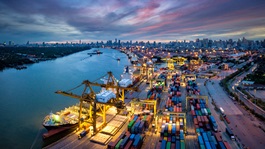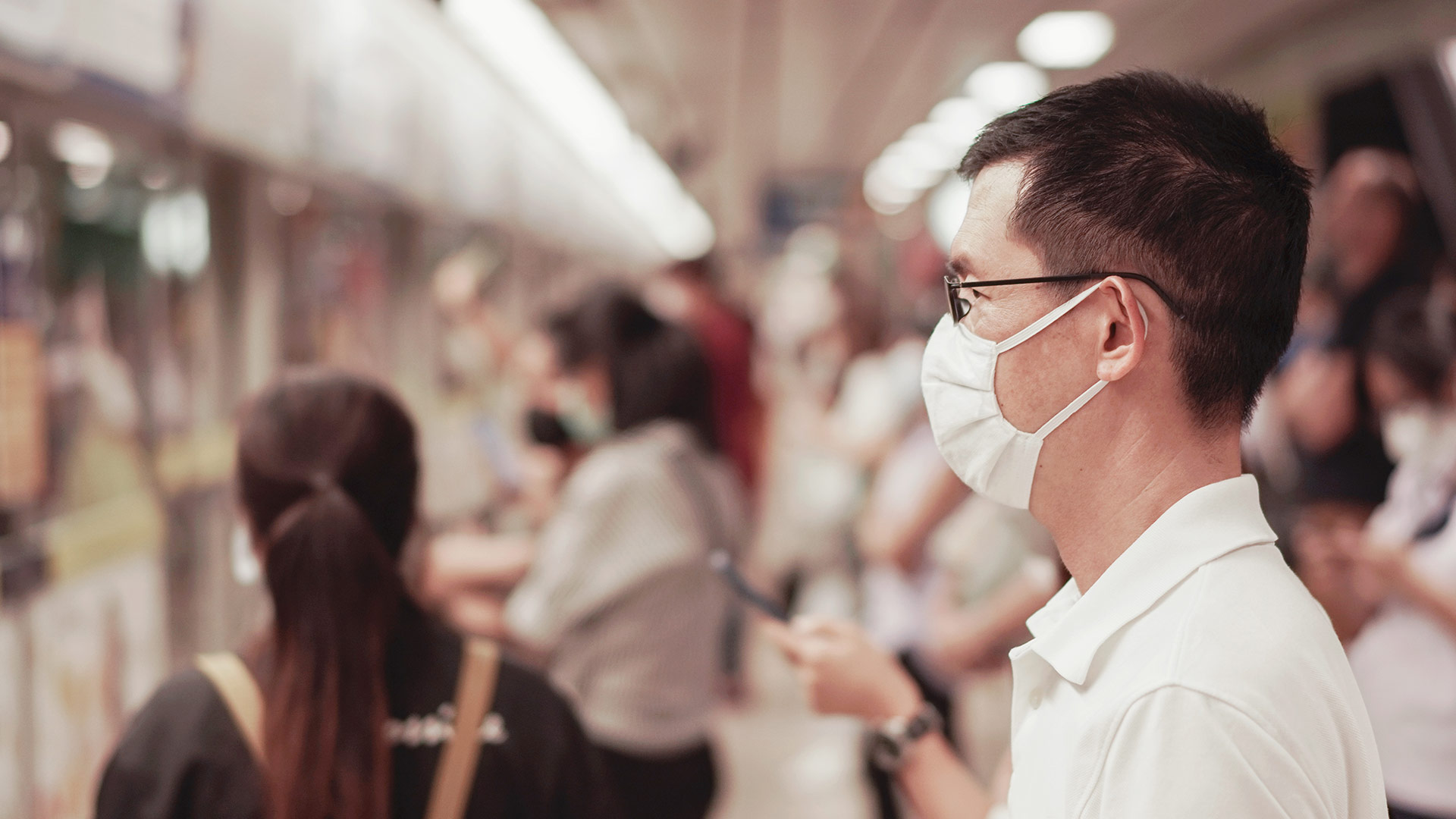
Publication
Navigating international trade and tariffs
Impacts of evolving trade regulations and compliance risks


Author:
Canada | Publication | July 28, 2020 - 3 PM ET
Both Alberta and British Columbia have now implemented measures to allow employees to return to the physical workplace. However, in both provinces, employers and service providers are subject to strict health and safety measures to protect against COVID-19-related risks and undue hazards. Below is what employers need to know in this respect.
Recently, certain jurisdictions in Canada have now, or will soon, be implementing face-covering requirements to help reduce the spread of COVID-19 under certain circumstances, namely in Ontario and in Quebec. In the west, there is no provincial regulation in Alberta or BC requiring that face coverings be worn to date. However, in Alberta, face coverings are being strongly encouraged. To this end, Alberta has established a mask program where free face coverings are being distributed at certain fast-food chains. Currently, the Alberta government recommends that medical masks and N95 surgical masks be reserved for frontline healthcare workers.
Moreover, some municipalities in Alberta are now or will soon be mandating the use of face coverings in public spaces. For example, the City of Calgary recently passed a municipal by-law that, effective August 1, 2020, mandates the wearing of face coverings on public transit, public vehicles (including taxis, ridesharing businesses and other vehicles for hire), and in all public indoor spaces including City of Calgary facilities. The penalty for failing to wear a face covering is $100. There are certain exceptions to mandatory face coverings, including children under two years old, people engaging in athletic or fitness activities, and people who are eating or drinking at public premises that offer food or beverage services.
Additionally it should be noted that in the province’s capital, Edmonton City Council will vote on a proposed by-law on July 29, 2020, which, if passed, will require that face coverings be worn at all times in an indoor or substantially enclosed public place or public vehicle (including vehicles for hire). The proposed by-law would take effect August 1, 2020 and apply to retail stores, entertainment venues, recreation centres, restaurants, transit vehicles, and transit stations but will not apply to schools, hospitals and healthcare facilities, child-care facilities, and employee-only spaces with physical barriers installed. The penalty for failing to wear a face covering would be $100. Like the Calgary by-law, certain exceptions apply.
In BC, the Provincial Health Officer (PHO) and Minister of Health confirmed in a joint statement that face coverings are recommended when it is more challenging to maintain physical distance. The Ministry of Health and the BC Centre for Disease Control (CDC) also released a guide that covers a range of recommended tools and strategies to help ensure safer operations both at a community and individual level. The guide recommends wearing face coverings where physical distance is difficult to maintain but also highlights the limitations of wearing a face covering including that the effectiveness of face coverings is limited to protecting others from an infected wearer, that face coverings are not replacements for physical distancing, and that young children should not generally be required to wear face coverings. Further information from BC’s CDC regarding face coverings can be found here. A guide from WorkSafe BC on selecting and using face coverings in a non-healthcare setting can be found here.
There are, however, some circumstances where face coverings are required in BC. For example, effective June 15, 2020, and following Transport Canada’s guidance, BC Ferries implemented a requirement that passengers over the age of two travelling on routes longer than 30 minutes must be in possession of a face covering (BC Ferries is not supplying face coverings). Passengers will have to confirm that they are in possession of a face covering and will be asked to wear one where a physical distance of two metres cannot be maintained. For clarity, passengers will not be able to travel without a face covering on their person.
Moreover, Translink and BC Transit encourage, but do not mandate, the use of face coverings where physical distance of two metres cannot be maintained. BC Transit has decided to hand out face coverings at transit stops in Victoria to encourage face covering use when physical distancing is not possible. Furthermore, BC Transit has also launched a province-wide campaign (30-second ad, bus exterior and interior ads, social media and print advertising) that will run for 8 weeks encouraging transit etiquette, including the use of face coverings.
Currently, in Alberta, a maximum of 200 people are permitted to gather for audience-type community outdoor events, such as festivals, performances or sporting events. The limit is reduced to 100 people for other outdoor events as well as indoor seated and audience events, such as wedding ceremonies, funeral services, movie theatres, and cultural performances. Generally, for indoor social gatherings, that number is further reduced to a maximum of 50 persons. In Alberta, a gathering is any situation that brings people together in the same space, at the same time, and for the same purpose.
With respect to restaurants (maximum of six patrons seated together), places of worship, and casinos, which are distinguished from gatherings for events specifically, the province has not expressly imposed any limitations on the number of physically attending persons. Rather, the number of persons allowed to attend such establishments is limited by the ability of the establishment to maintain physical distancing rules. Indeed, Alberta requires that individuals maintain a two-metre distance from persons outside of their household or cohort group.
The Alberta government has also allowed for individuals to gather in what it has called “cohort groups.” A cohort group is a small social circle made up of people who interact regularly. These individuals that are part of the same cohort group are not expressly required to maintain a physical distance of two metres. Typically, core cohorts may be made of up to 15 persons not living in the same home. Other cohort groups that are available to Albertans include working or participating in the following:
Across the border, in BC, a maximum of 50 people are permitted to gather either indoors or outdoors for events. This applies to the gathering together of a large number of people in close contact with one another in the same place for the purpose of attending such events as social gatherings, ceremonies, forms of worship, demonstrations, performances, sporting events, and movies, among others. This limit does not apply to the presence of workers at a worksite when engaged in their work activities, to customers in a mall or retail establishment when engaged in shopping activities or seeking services, to individuals attending an episodic vending market or to individuals at a campsite, in a park or at any other outside location when not attending an event. More guidelines from the BC CDC with respect to community settings, including malls and stores, recreation facilities, and faith-based organizations, can be found here.
In addition to the 50-person limit for events, Food and Liquor Service Establishments in BC must also ensure no more than six patrons are seated together even if they belong to the same party. In light of the recent spike in cases following the loosening of restrictions across the province, restaurants, bars, and nightclubs must now ensure every patron is seated at all times except to use a self-serve station, washroom facilities, or to leave the premises. Dance floors must be closed with physical barriers or occupied with tables and patrons must not sing, engage in Karaoke, or dance on the premises. Live performers must be separated from patrons by a physical barrier and there must be at least a three-metre separation. In addition, these establishments must determine the maximum number of patrons that may be accommodated while ensuring two metres of physical distance between parties of patrons. Establishments must also take active measures to prevent the congregation of patrons outside, such as taking reservations and requesting patrons to remain in their vehicles or elsewhere until notified of seating availability. Further limits on events at these establishments were also put in place, including requiring events to end no later than 11:00 PM, prohibiting more than two events to be hosted in the same day on the same premises, requiring at least one hour between events for cleaning and sanitizing, and implementing measures such as selling tickets in advance to avoid line-ups and the congregation of patrons.
The BC PHO also announced that a new PHO Order will be put in place in the coming days to limit the number of people who can stay at and visit short-term rental accommodations and boat rentals. Similar to the rules for Food and Liquor Service Establishments, the limit will be determined by the size of the space. More information to follow in the coming days.
While Stage 2 of Alberta’s Restart Plan has allowed many businesses to reopen, not all activities are permitted, including children’s centres, amusement parks and nightclubs. More information can be found here.
The City of Calgary’s mandatory face covering by-law includes a requirement for business operators and owners to display signage in all public entryways of businesses and public vehicles (signage can be downloaded here). Businesses are not expected to deny services, as not everyone is required to wear a face covering. The penalty for failing to display the prescribed signage is $200.
In addition, the Alberta government has published a series of resources and documents on Stage 2 on reopening and returning to the workplace, which provide helpful business- and sector-specific guidance. Examples of this sectoral guidance includes, among others, guidance for office buildings, public transit and personal services (activities performed on, in, or to a person’s skin, hair, nails, teeth or other body part for the primary purpose of enhancing, preserving or altering the person’s appearance). For more information, please click here. A general relaunch guide for businesses can be found here. Updated guidance for visiting healthcare facilities, including long-term care homes, licensed supportive living facilities and residential facilities offering hospice services, can be found here.
For its part, Phase 3 of BC’s Restart Plan has allowed additional sectors and activities to reopen including, among others, faith-based organizations, motion picture and television production and performing arts. Like Alberta, WorkSafe BC has published a series of business- and sector-specific guidance for returning to safe operations that can be found here. The general requirements for all workplaces include employers developing and posting a COVID-19 Safety Plan outlining the policies, guidelines, and procedures put in place to minimize the risk of transmission. WorkSafe BC guidance on developing a COVID-19 Safety Plan can be found here. Further information from the BC CDC for employers as well as industry-specific guidance related to industrial camps, food businesses, and hotels and tourism can be found here.
The Government of Alberta has created a guide for wearing PPE in non-healthcare settings. It explains how various PPE should be used, when they should be used, and how they should fit, including information on homemade face coverings and eye protection.
The BC Provincial Heath Services Authority has a number of resources that provide guidance for staff in wearing PPE as well as a guide for wearing non-medical face coverings in non-clinical settings.
A number of other municipalities in Alberta have implemented or are considering implementing mandatory face-covering requirements. Some key examples are noted below:
As the summer progresses, it can be expected that more regions in western Canada may follow suit. Employers should be mindful and stay informed of any future change in this regard.
Employers and service-providers should continue to monitor and follow provincial orders and guidance related to health and safety measures, including face coverings, PPE and gathering restrictions, which can be expected to change as new evidence emerges. While face coverings are not currently provincially mandated in Alberta or BC, employers and service-providers will want to consider municipal by-laws, industry-specific guidance from provincial government authorities as well as the risks and health / safety concerns in their particular workplaces when deciding whether to require face coverings or PPE for their workers and/or customers. As always, employers should seek legal advice if they have specific questions surrounding workplace health and safety obligations.
The authors wish to thank summer students Elizabeth Kazakov and Nour Abbas for their help in preparing this legal update.

Publication
Impacts of evolving trade regulations and compliance risks

Publication
As discussed in our previous look at the 2025 proxy season, the rapid development of artificial intelligence (AI) technologies has elevated AI to a core governance concern for shareholders, and as AI continues to dominate headlines, the urgency of finding a balance between transparency, responsibility, and return on investment for shareholders is likely to spur a growing number of AI-related shareholder proposals in the coming years.

Publication
As Canadian businesses deal with tariff uncertainty and trade protectionism, the federal government has announced its intention to introduce rules promoting domestic goods and services in government contracting by most federal departments and agencies.
Subscribe and stay up to date with the latest legal news, information and events . . .
© Norton Rose Fulbright LLP 2025